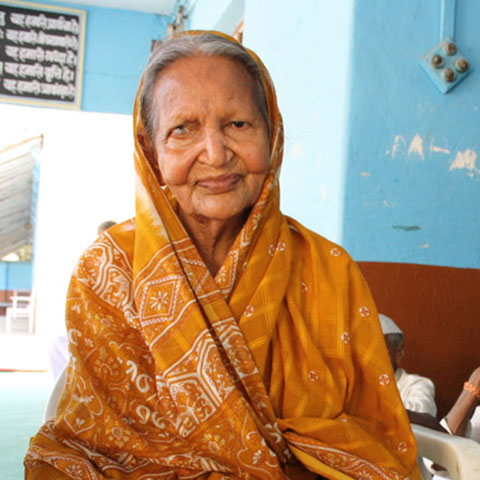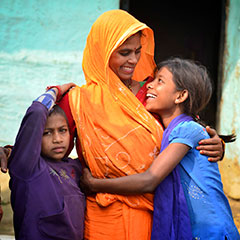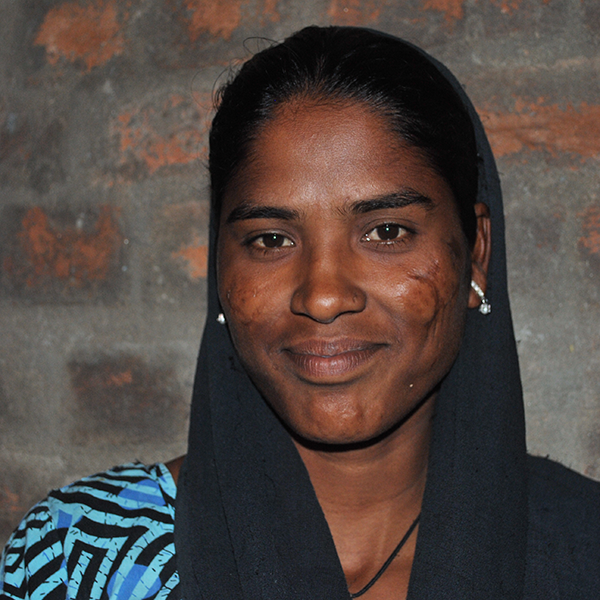Zero Transmission
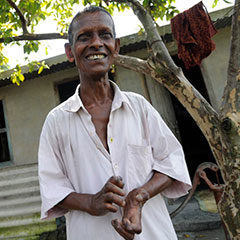
Reaching Zero Transmission
The introduction, decades ago, of multi-drug therapy has made leprosy easily treatable. More than 16 million people have been cured since 1981. Yet, although we have tools to prevent the disease from spreading, the recorded number of new patients seems stuck at around 200,000 each year. This means that transmission is continuing, and more than one million people will be newly diagnosed over the next five years. Through new research and more effective use in endemic areas of the tools and knowledge we already have, we are working together with partners to bring the number of new cases of leprosy worldwide down towards zero.
Challenges
The World Health Organization’s statistics on leprosy tell us that 140,594 new cases of leprosy were reported in 2021, 74% of them in India, Brazil and Indonesia. The dramatic 35% decline in reported new cases in 2020 and 2021, compared with 2019, is attributed to interruptions to health services due to Covid-19. The actual new case numbers in each year are likely to be nearer to 200,000. The numbers reported for 2021 included 9,052 children, a significant indicator that there is ongoing and recent transmission of leprosy in communities. It also included 8,492 persons who were already showing signs of permanent damage to their hands, feet or eyes – an 18% increase on 2019. This is an indicator that people are not getting diagnosed or treated early enough, and that the large gap in case detection in 2020 is already damaging new patients’ lives. Finding those undiagnosed cases is a matter of urgency in all endemic countries.
The challenge for the leprosy world is that the number of new cases each year has hardly changed over the past ten years. We need new knowledge and widespread implementation of best practice, to break this static pattern and start a real downward trend in leprosy transmission.
Mechanism of transmission
The mechanism of transmission of leprosy infection is not fully understood. It is generally thought to be by droplets containing the causative bacillus, Mycobacterium leprae, spread through the upper respiratory tract. The incubation period is long, usually between two and eight years but it can be up to 20 years in some cases. Casual contact with a person affected by leprosy does not often seem to lead to infection, but living for several years in an endemic area, especially in close contact with an undiagnosed person, increases the risk of the disease.
The stigma associated with leprosy remains a barrier to ending transmission, as people are often reluctant to get diagnosed or seek help. In endemic countries like India, Brazil and Indonesia, societal and personal behaviours play a large role in how promptly leprosy is diagnosed. Many people in endemic regions are unaware of the preliminary symptoms of leprosy, with individuals only seeking help when disability sets in.
Diagnosis
National leprosy programmes worldwide recognise that awareness raising, early diagnosis and prompt treatment with multidrug therapy (MDT) are fundamental to reducing leprosy transmission. MDT is highly effective at killing the bacteria and stopping the spread of the disease after the treatment has started. However, one of the frustrating aspects of leprosy treatment is that, despite the efficacy of MDT, it is not producing the hoped-for reduction in new cases. Transmission may be occurring before treatment has started and so early detection is essential. The absence of a diagnostic test to detect early leprosy before it becomes clinically apparent is a severe limitation.
Active measures to identify new cases at an early stage have a good effect but require additional resources. The most cost-effective method is to examine the close contacts of new cases, such as the household and perhaps neighbours. Any new cases found can be immediately started on treatment.
Prevention
Contact tracing can lead on to other methods to prevent the transmission of leprosy. Post-exposure prophylaxis (PEP) treatment given as a single dose of antibiotic to contacts of new cases has been found to have a protective effect against leprosy in over 50% of exposed social contacts. Although PEP has been piloted and is being implemented in increasing numbers of countries, scaling-up is still an issue. Hurdles still need to be overcome for its implementation in all the most endemic areas. The initial research into PEP showed that it is less effective in preventing leprosy among persons living in the same household as a newly diagnosed patient, so there are ongoing studies on ways to improve the regimen.
There is no anti-leprosy vaccine, although the childhood BCG vaccination against TB offers some protection. Early human trials are going on in the US, India and Brazil towards a more specific leprosy vaccine – a lengthy and costly process that needs ongoing impetus.
Working for positive change
Although leprosy is completely curable, there are more than 200,000 new cases every year and potentially many more go undetected. Because of the stigma and disabling consequences associated with leprosy, the number of people whose lives are impacted can be multiplied many times.
Early diagnosis and prompt treatment
Thanks to freely available multidrug therapy, the number of people on treatment has dropped dramatically over the past decades. However, this drop has not been enough to interrupt leprosy transmission. An essential step towards Zero Transmission is to improve diagnostics tools and to make the diagnosis as early as possible.
“As ancient as leprosy is, we are still not adept at spotting it” says Paul Saunderson, member of ILEP’s Technical Commission. “It is mainly diagnosed by expert clinicians using defined criteria, along with the use of slit-skin smears and biopsies. But as the prevalence of the disease is decreasing, clinical expertise is diminishing.” This diminishing expertise prolongs diagnosis, Saunderson says, allowing the disease to set in and spread further, so efforts to achieve Zero Transmission are undermined.
For this reason, one of ILEP’s primary roles, working alongside national leprosy programmes in more than 60 countries, is as a source of expertise across a very wide range of disciplines and services related to leprosy. ILEP Members work closely with governments and other partners to advise on, model and co-implement active case-finding, contact-tracing and leprosy prevention programmes. They work with government staff to build capacity and, while doing so, advocate for governments to invest in these programmes, especially in leprosy-endemic areas and ‘hot spots,’ to ensure that people are diagnosed and treated early and avoid the risk of disability. Several ILEP Members supplement the work of governments by running case detection activities, especially in hard to reach areas. Some of these activities bring to light surprising numbers of new cases of leprosy. Early detection and prompt treatment remain the cornerstones of well-run leprosy programmes.
Diagnostic test
An ideal diagnostic test would identify M. leprae infected individuals at risk of developing disease and/or who contribute to transmission. This would need to be a low-cost, point-of-care, non-invasive test – a challenging multi-year research assignment. Introducing a new diagnostic test would also require a strong programmatic and financial commitment from governments and donors. ILEP technical experts, working with the Global Partnership for Zero Leprosy and the WHO Diagnostic Technical Advisory Group (DTAG), have helped design Target Product Profiles (TPPs) for a point-of-care diagnostic test to detect M. leprae infection, and a laboratory-based test for confirmatory diagnosis of leprosy at the clinical setting. The published TPPs will be used to lobby funders and developers to work on development of diagnostics for leprosy.
Contact tracing and post-exposure prophylaxis (PEP)
PEP is a preventive drug treatment for persons who have been in frequent contact with newly diagnosed patients, to decrease their risk of developing leprosy. ILEP Members have long known the advantages of tracing and examining contacts, such as family members, to detect possible leprosy. Now, the additional opportunity to provide contacts with preventive medicine adds impetus to what is already good practice. This approach is recommended in the WHO Leprosy Guidelines, published in 2018, which was followed by the detailed guidance Leprosy/Hansen disease: Contact tracing and post-exposure prophylaxis, issued in 2020. PEP was pioneered in a large research study in Bangladesh around ten years ago. More recent research, undertaken over several pilot sites by ILEP members and Novartis, has shown that it is very feasible to implement PEP in country programs, and that it is popular with both health staff and the general public.
Seven ILEP Members have been involved in five ongoing, large-scale research projects in more than thirteen countries, all aiming to demonstrate the most effective and feasible approaches to what could begin to break the chain of leprosy transmission. These projects include research into more potent PEP regimens. LepVax, a potential vaccine now undergoing clinical trials under the overall direction of ILEP Member American Leprosy Missions, may prove valuable in adding to the preventive effects of PEP. Together, these initiatives give hope for an increasingly successful preventive campaign against leprosy.
Case Studies
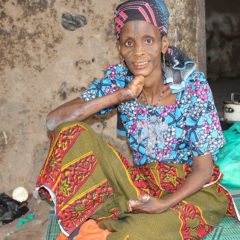
Binta Alhassan Abubakar: Diagnosis gives answers and hope
At 12 years of age, Binta Alhassan Abubakar began to show signs of being affected by leprosy. “Nobody knew what the symptoms were,” she said. “My father dismissed it as a common illness which would pass soon. After two years, […]
Read More →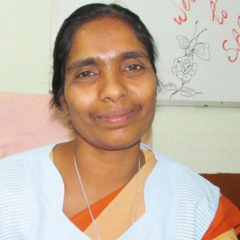
Sister Julia Thundathil’s story: Fighting the spread of leprosy
A chance encounter between a Catholic nun and a group of elderly people affected by leprosy in the central Indian state of Madhya Pradesh more than twenty years ago proved a turning point in the lives of the six leprosy […]
Read More →